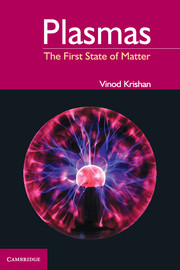5 - The Radiating Plasmas
Published online by Cambridge University Press: 05 June 2014
Summary
Radiation and Plasmas
Plasmas and radiation have a symbiotic relationship. We learnt in Chapter 1 that the universe evolved from a soup of radiation and plasma. High-energy radiation creates electron–positron plasma. The right kind of radiation can ionize a gas to produce a plasma. A plasma consists of energetic electrically charged particles. Electrically charged particles undergoing acceleration or deceleration produce radiation. Radiation is a generic term for electric and magnetic fields fluctuating with space and time in a wide variety of ways. In fact, extremely energetic particles such as obtained in the laboratory accelerators are often referred to as particle radiation. Extremely energetic particles observed in the cosmos are called cosmic rays. This is because the quantum mechanics revealed the dual character of radiation as well as of material particles. Radiation can act like a particle called the photon, and it can also act like a wave called the electromagnetic wave. Similarly, an electron possesses the wave–particle duality. We shall, in this chapter, learn about the essentials of radiation, how it can be generated from a single charged particle, and what difference would a collection of charged particles, a plasma, make.
A Quick Revisit of Waves
Waves are disturbances that vary periodically with space and time. A wave is characterized by an amplitude that represents its strength and a phase that represents its space–time location.
- Type
- Chapter
- Information
- PlasmasThe First State of Matter, pp. 165 - 222Publisher: Cambridge University PressPrint publication year: 2014



